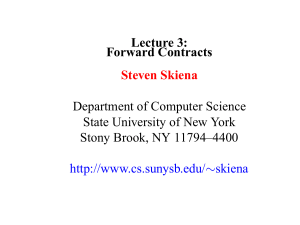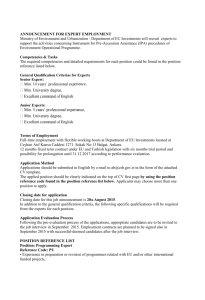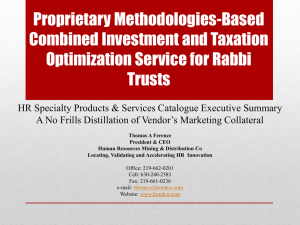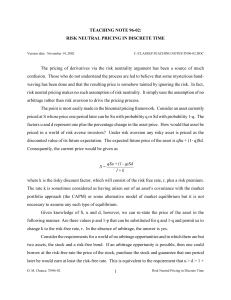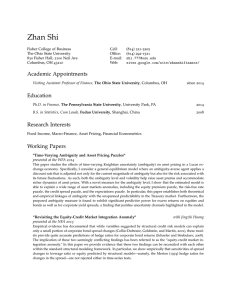Quantitative methods for finance
advertisement
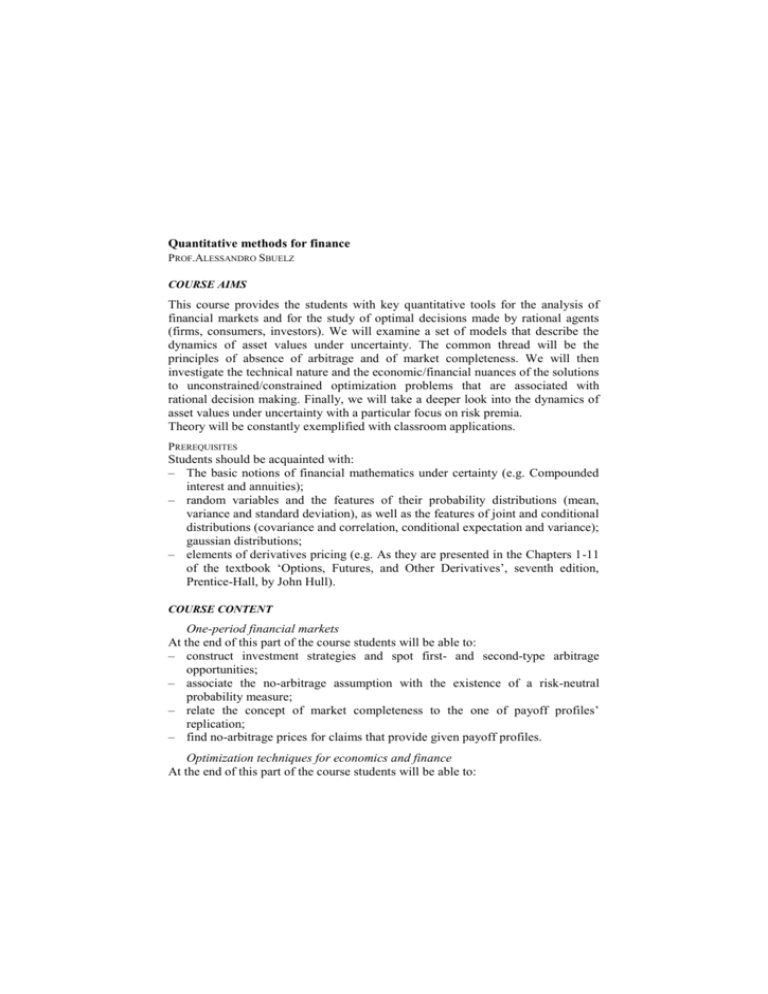
Quantitative methods for finance PROF.ALESSANDRO SBUELZ COURSE AIMS This course provides the students with key quantitative tools for the analysis of financial markets and for the study of optimal decisions made by rational agents (firms, consumers, investors). We will examine a set of models that describe the dynamics of asset values under uncertainty. The common thread will be the principles of absence of arbitrage and of market completeness. We will then investigate the technical nature and the economic/financial nuances of the solutions to unconstrained/constrained optimization problems that are associated with rational decision making. Finally, we will take a deeper look into the dynamics of asset values under uncertainty with a particular focus on risk premia. Theory will be constantly exemplified with classroom applications. PREREQUISITES Students should be acquainted with: – The basic notions of financial mathematics under certainty (e.g. Compounded interest and annuities); – random variables and the features of their probability distributions (mean, variance and standard deviation), as well as the features of joint and conditional distributions (covariance and correlation, conditional expectation and variance); gaussian distributions; – elements of derivatives pricing (e.g. As they are presented in the Chapters 1-11 of the textbook ‘Options, Futures, and Other Derivatives’, seventh edition, Prentice-Hall, by John Hull). COURSE CONTENT One-period financial markets At the end of this part of the course students will be able to: – construct investment strategies and spot first- and second-type arbitrage opportunities; – associate the no-arbitrage assumption with the existence of a risk-neutral probability measure; – relate the concept of market completeness to the one of payoff profiles’ replication; – find no-arbitrage prices for claims that provide given payoff profiles. Optimization techniques for economics and finance At the end of this part of the course students will be able to: – properly set up optimization problems related to the unconstrained/constrained objectives of firms, consumers and investors; – work out either paper-and-pencil or numerical solutions of such problems; – appreciate the underpinnings of the solution techniques employed; – grasp the economic/financial interpretation of the solutions obtained. Asset value dynamics At the end of this part of the course students will be able to: – comprehend the groundwork of different models of cash-flow dynamics; – understand the equilibrium return on an asset given the cash-flow dynamics; – calculate the asset’s risk exposures and the corresponding risk premia; – work out the expected return on a portfolio of several assets. READING LIST Lecture notes made available on Blackboard. A. BATTAUZ-F. ORTU, Arbitrage Theory in Discrete and Continuous Time, Edizioni EGEA, last edition. J.H. COCHRANE, Asset Pricing, Princeton University Press, 2001. K. SYDSAETER-P.J. HAMMOND, Mathematics for economic analysis, Prentice-Hall, 1995. TEACHING METHOD The course is based on frontal teaching with classroom applications of the theory covered. ASSESSMENT METHOD The valuation mark is based on a final written exam, which is made of an open question and three multiple-choice questions. NOTES Place and time of consultation hours The instructor’s office hours are published on his web page.




